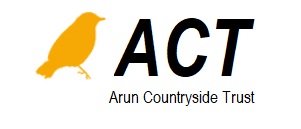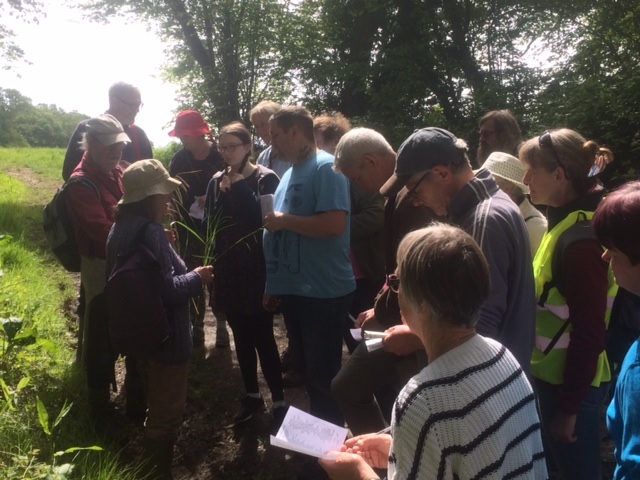 Bright warm sunshine welcomed more than 20 walkers to MAVES’ Wildflower Walk led by Nick Sturt and Frances Abraham from the Sussex Botanical Recording Society, on Sunday 13th May.
Bright warm sunshine welcomed more than 20 walkers to MAVES’ Wildflower Walk led by Nick Sturt and Frances Abraham from the Sussex Botanical Recording Society, on Sunday 13th May.
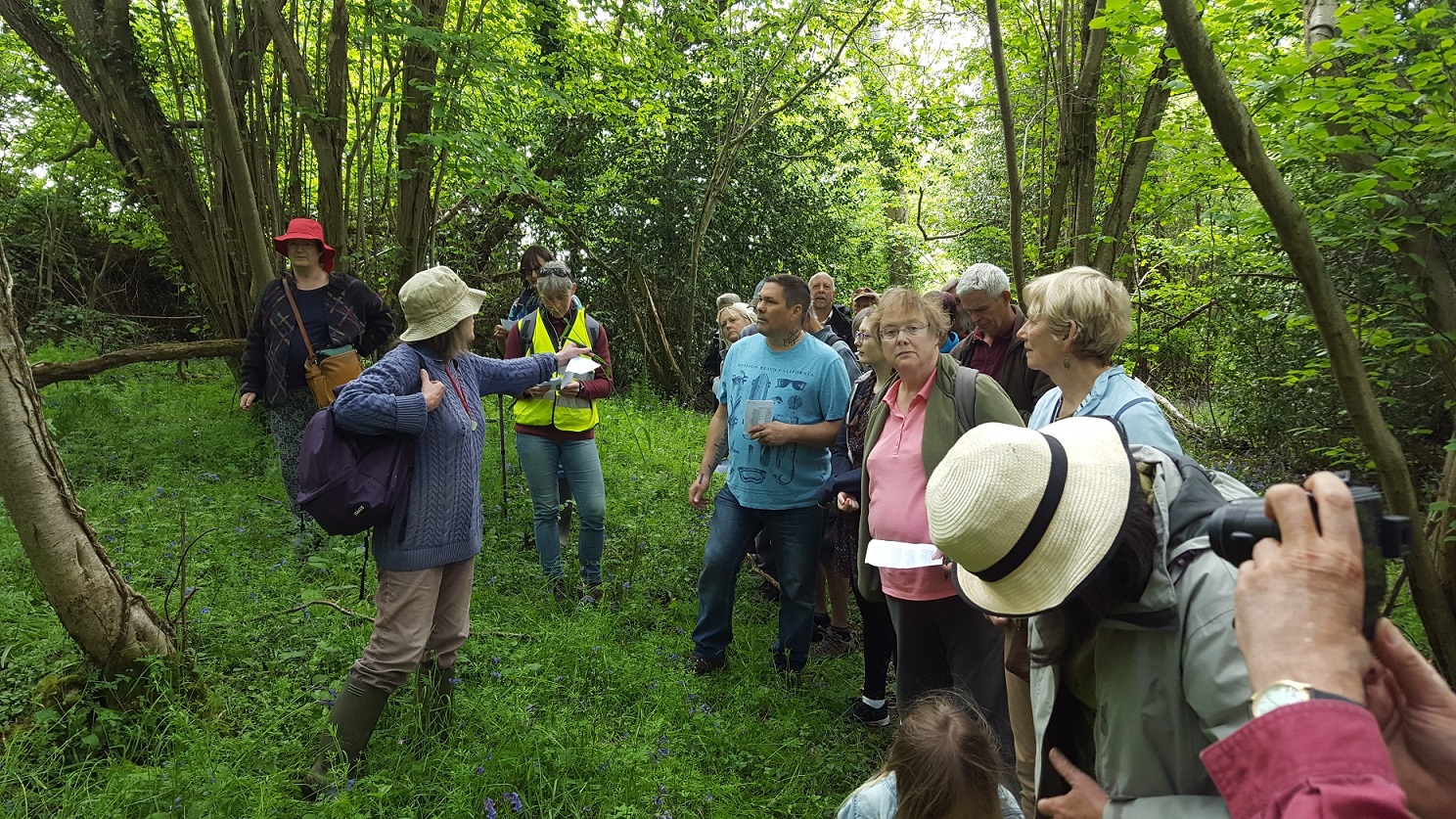
The walk started from Binsted Church, following the “Muddy Lane” footpath alongside the laid hedge, (laid in sections by SDNPA Rangers Service Volunteers and MAVES in 2017 and 2018). The recent warm weather has accelerated the new spring growth so it is already burgeoning with insects and bees. The recently planted clumps of cowslips and primroses will be a welcome splash of colour next spring.
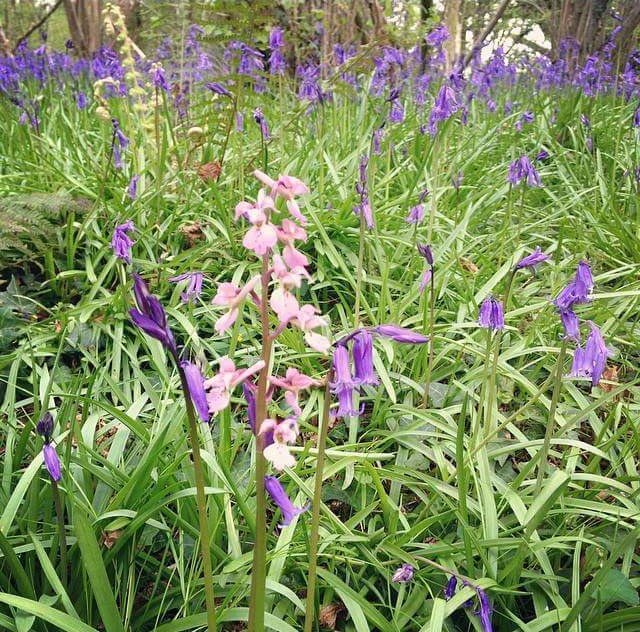
Nick and Frances took the group through Spinningwheel Copse, an area of ancient woodland with over 20 ancient woodland plant indicators. The final number has yet to be tallied.
The group were soon quickly ticking off against their list of plants, including some which were not on the list such as the Redcurrant (Ribes rubrum). Native English Bluebells (Hyacinthoides non-scripta) and Early Purple Orchids (Orchis mascula) formed a carpet of colour, left, punctuated by Wood Anemones (Anemone sylvestris), Wood sorrel (Oxalis acetosella, below right), and Primroses (Primula vulgaris). Extra spots of colour here and there came from Violets and Bugle and Yellow Pimpernel, and the bright berries of Butcher's Broom (Ruscus aculeatus).
It was harder to spot the small ground plants not yet in flower such as Wood Avens (Geum x urbanum), or subtler coloured ones such as Ground Ivy (Glechoma hederacea) or the little off-white pom-poms of Sanicle (Sanicula europaea). Many of us had been put off by the difficulties of trying to identify umbellifers apart from the familiar Cow Parsley, but we were all delighted to hear Frances' stories of schoolchildren playing games for edible Pignuts (Conopodium majus), and were soon spotting them all over the place.
.jpg)
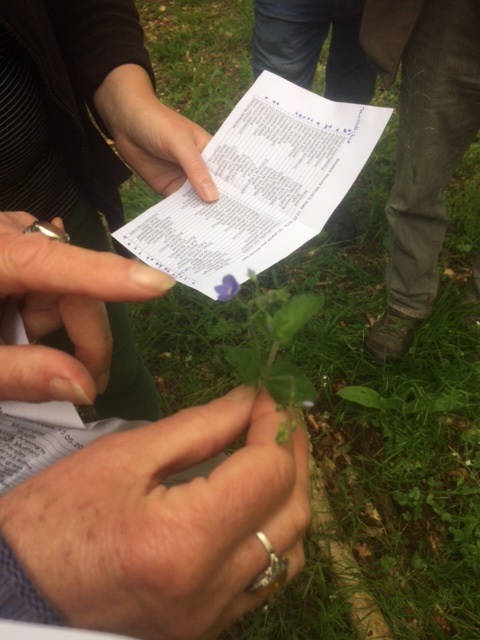 We were surprised to learn how telling some species apart seemed to be a matter of judging their characteristics by degree rather than by clear difference. After much searching the Wood Speedwell (Veronica montana) was eventually definitely distinguished from the Germander Speedwell (Veronica chamaedrys) - mainly by the way the hairs grow on the stalk.
We were surprised to learn how telling some species apart seemed to be a matter of judging their characteristics by degree rather than by clear difference. After much searching the Wood Speedwell (Veronica montana) was eventually definitely distinguished from the Germander Speedwell (Veronica chamaedrys) - mainly by the way the hairs grow on the stalk.
We learnt too that “green” is “good” and woodlands can be just as rich even if you can’t see masses of bright flowers, if you look closely. Damp loving woodland grasses such as Wood Sedge (Carex sylvatica) and Wood Millet (Milium effusum) were quickly spotted; the charmer of all the green flowerers was the tiny Town Hall Clock Flower or Moschatel (Adoxa moschatellina), with, at the head of its little stalk, four tiny green 'clock-face' flowers pointing in each direction - and one on top.
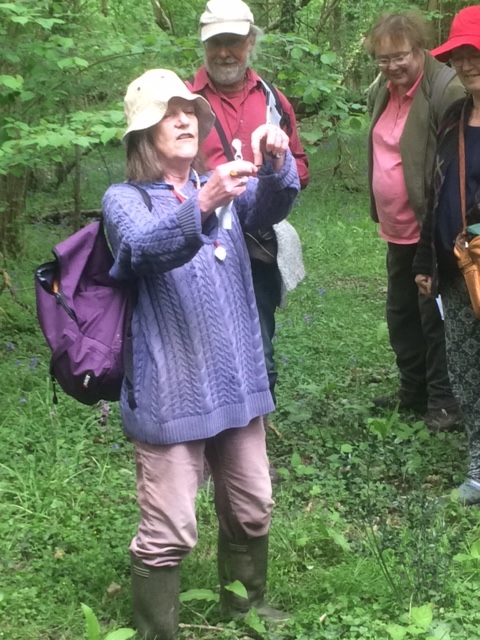 The Walk was over-shadowed by the news that this special copse of Ancient Woodland, linked to the newly laid hedge, which is such an important corridor for wildlife, are both now threatened by the proposed Option 5a Arundel Bypass.
The Walk was over-shadowed by the news that this special copse of Ancient Woodland, linked to the newly laid hedge, which is such an important corridor for wildlife, are both now threatened by the proposed Option 5a Arundel Bypass.
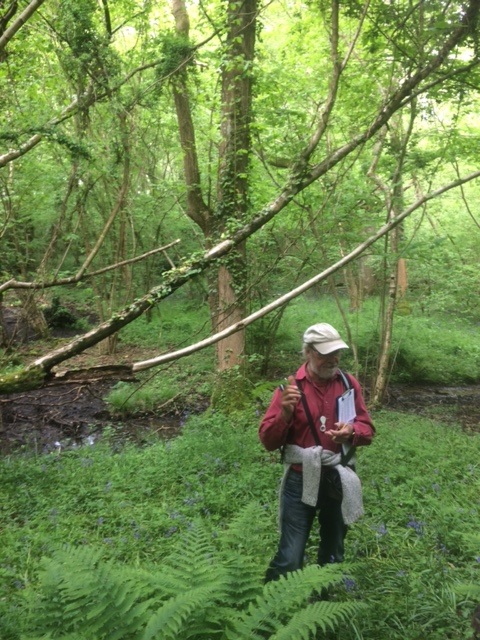 MAVES would like to express their thanks to Nick and Frances for leading such a fascinating and informative Walk in a small part of this very special landscape. We all came away much richer from the knowledge of what is literally under our feet when we walk through this very special landscape. MAVES would also like to thank the Sussex Botanical Recording Society for their donation towards Maves’ survey work and to the landowner for allowing us access to his land for this Walk.
MAVES would like to express their thanks to Nick and Frances for leading such a fascinating and informative Walk in a small part of this very special landscape. We all came away much richer from the knowledge of what is literally under our feet when we walk through this very special landscape. MAVES would also like to thank the Sussex Botanical Recording Society for their donation towards Maves’ survey work and to the landowner for allowing us access to his land for this Walk.
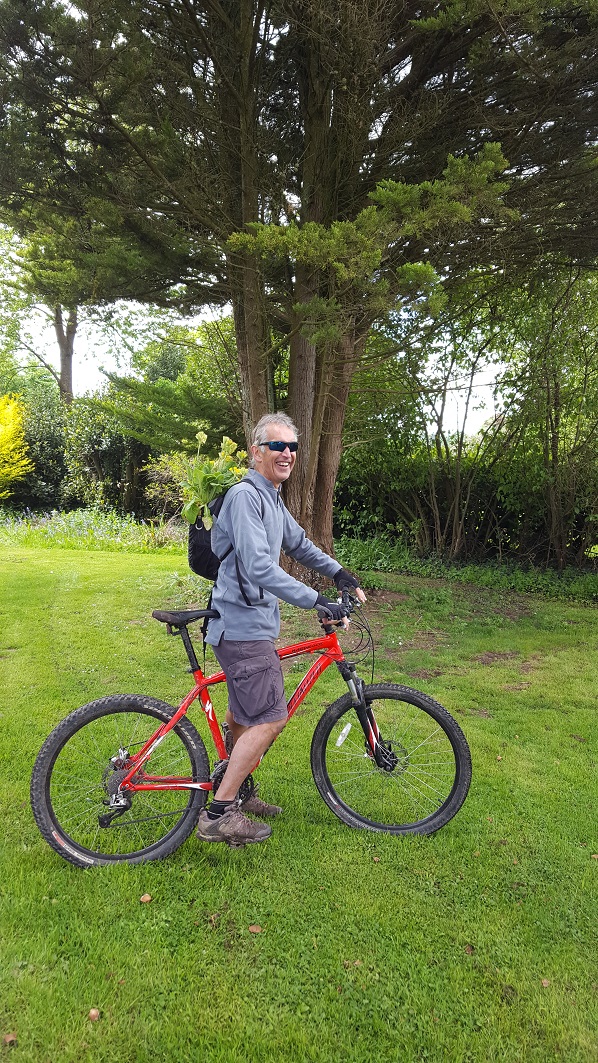
Left: Andy Davies, MAVES committee member, cycles away from the walk with a Cowslip for his garden on his back (donated by Binsted Nursery for people who came on the Walk).
